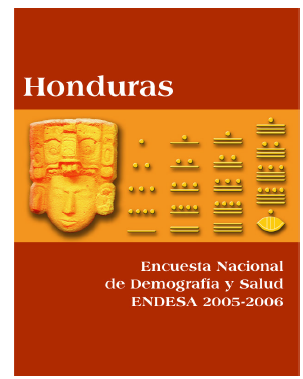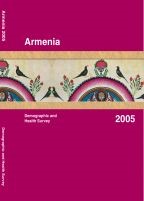Inside The DHS Program: Q&A with Gulnara Semenov
 Name: Gulnara Semenov
Name: Gulnara Semenov
Position title: Senior Medical Officer
What is your role at The DHS Program? I served as Regional Coordinator for Anglophone Africa, Asia, Europe and Eurasia and as a survey manager for DHS and Service Provision Assessment (SPA) surveys for the last 15 years. I was responsible for negotiating scope, content, logistics, and budgets for both DHS and SPA surveys, in addition to working with survey stakeholders to develop, manage, and train staff for surveys. I recently started as Senior Medical Officer and will provide technical support for all health-related aspects of DHS Program surveys. I will also work on new health-related modules and represent The DHS Program in various technical working groups.
Languages spoken: Russian and English
Favorite DHS Program survey cover (country, survey type, and year): I love covers that open your eyes to the people we describe in the report. My all-time favorite is the 2005-06 Honduras DHS cover featuring the Maya numeral system; I think it is an incredibly cool cover showing that science and art are closely related.
I also like the 2005 Armenia DHS and 2010 Armenia DHS covers featuring miniatures from the medieval Armenian illuminated manuscripts, a very refined and remarkable art form showing the character of the people they represent.
What has been the biggest change in The DHS Program during your time here? The most obvious is using the computer-assisted personal interview (CAPI) system for data collection. We started collecting information using paper questionnaires, and now we are moving towards using electronic devices to collect data, which requires a different kind of technical assistance and skills from the interviewers. The DHS Program has also expanded the questionnaires which are now much larger and cover lots of subjects. We added additional trainings and biomarkers which require various skills and expertise from The DHS Program staff.
What work are you most proud of? Hard to single out, but I think the most rewarding is to be part of The DHS Program family and work side by side with my colleagues who are all remarkable professionals. They demonstrate exceptional examples of work ethic ensuring countries receive the best technical assistance the survey deserves to maintain the reputation of the DHS survey as the gold standard. The DHS program is truly dedicated to capacity building and it is always rewarding to hear from the colleagues that our technical assistance is very comprehensive and transparent in skills transfer.
What’s your favorite trip to date? Every new country is a surprise. I remember Egypt for its remarkable temples, art, history, and their wonderful people. I came to Cairo over the Easter break and was very surprised to learn it was a national holiday and the office was closed!
I was so surprised to find out how lush and green West Africa is when I first visited Ghana. I certainly love to go back to the countries of the former Soviet Union, my home region, to see for myself their achievements in building democracy over the last 20 years.
What developments in data collection or global health are you excited about right now? Developments in technology are hard to ignore whether it is a personal device that can store tons of information or the availability of genetically tailored treatments to treat a specific form of cancer. I am very hopeful that global health is now more and more people-centered. It is amazing how a small mobile phone became a daily part of life for a person in every corner of the word.




